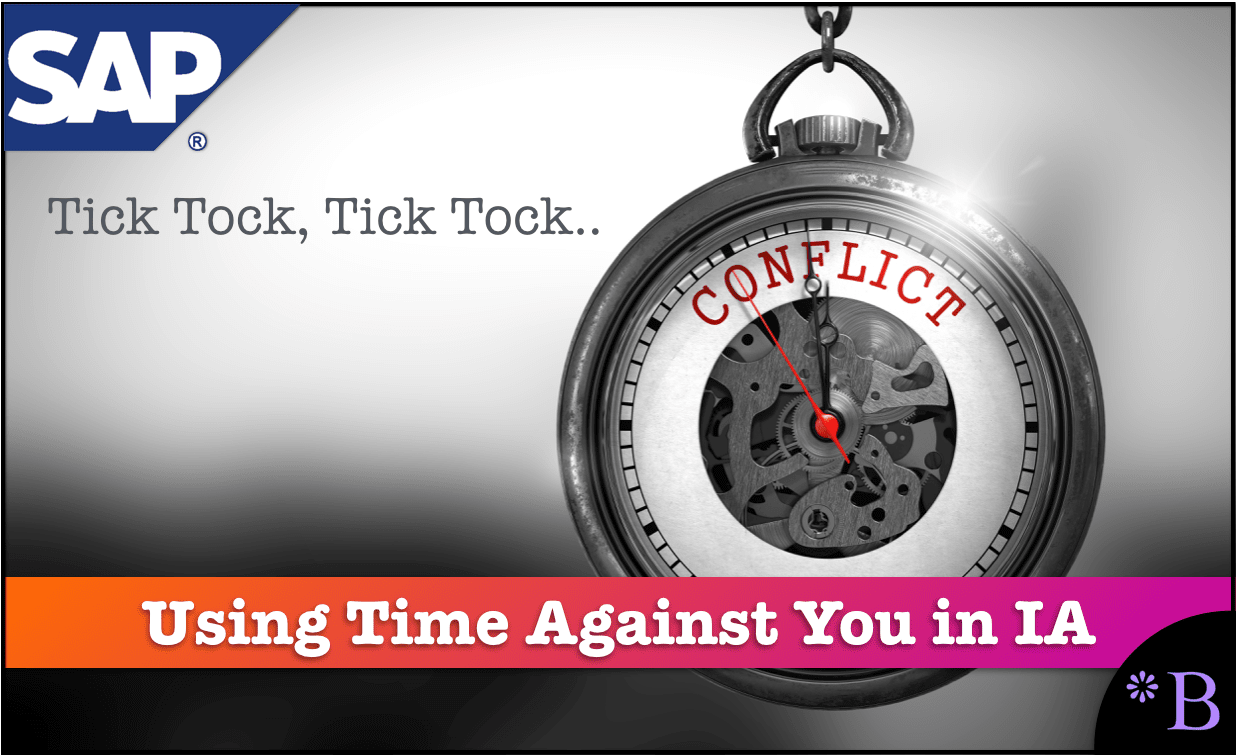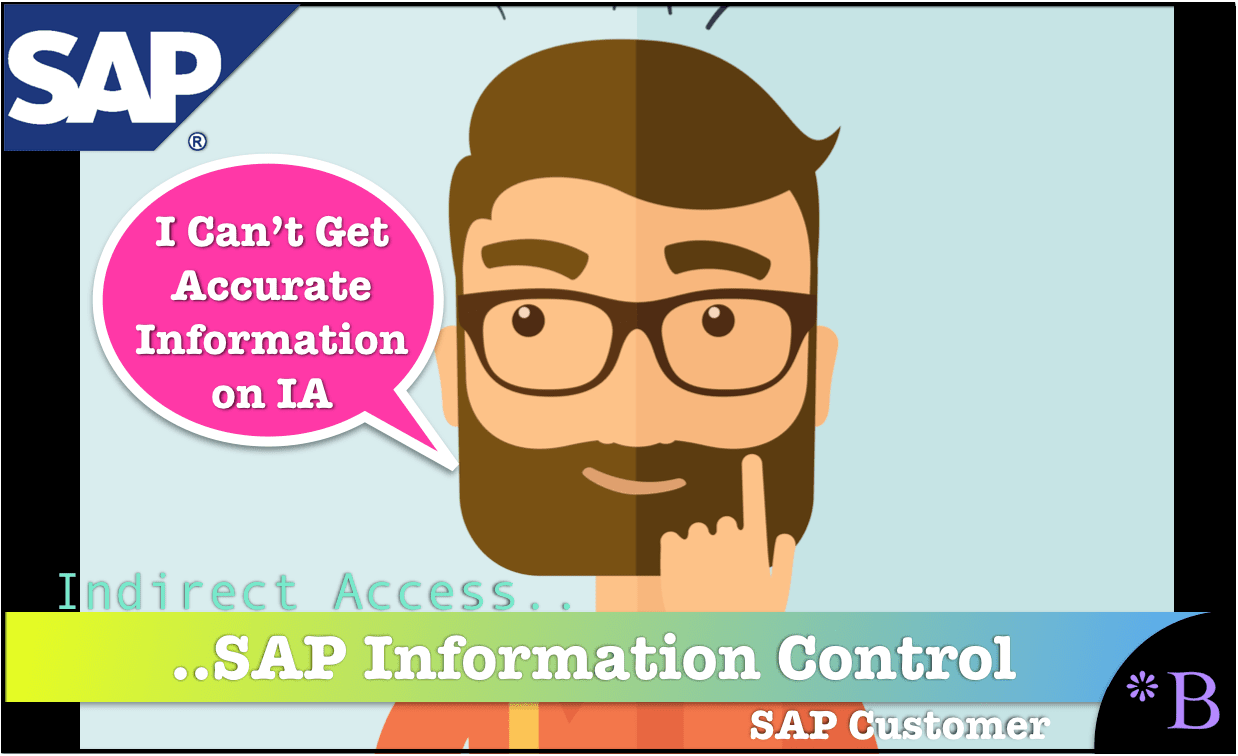The Time Crunch When Faced with SAP’s Indirect Access
Executive Summary
- SAP uses time constraints in a highly underhanded and effective way against their customers.
- Learn how SAP does this and what SAP customers can expect.

Introduction
One is the interesting features of indirect access that SAP does not want its customers to know about. And, of course, all of the consulting companies help SAP hide from their clients. This is the feature of the time constraints that an indirect access claim by SAP will place on the customer.
Our References for This Article
If you want to see our references for this article and other related Brightwork articles, see this link.
Notice of Lack of Financial Bias: We have no financial ties to SAP or any other entity mentioned in this article.
- This is published by a research entity, not some lowbrow entity that is part of the SAP ecosystem.
- Second, no one paid for this article to be written, and it is not pretending to inform you while being rigged to sell you software or consulting services. Unlike nearly every other article you will find from Google on this topic, it has had no input from any company's marketing or sales department. As you are reading this article, consider how rare this is. The vast majority of information on the Internet on SAP is provided by SAP, which is filled with false claims and sleazy consulting companies and SAP consultants who will tell any lie for personal benefit. Furthermore, SAP pays off all IT analysts -- who have the same concern for accuracy as SAP. Not one of these entities will disclose their pro-SAP financial bias to their readers.
Tactics Used by SAP to Maximize The Payment
SAP will analyze a company’s indirect access “liability” and use several tactics to extract the most from the account. It uses several techniques. The first is a miscalculation of the indirect access “liability.” Whatever SAP estimates, one should be confident that the amount calculated by SAP is not the correct amount if an independent entity calculates the liability.
The Time Given by SAP to Respond to an Indirect Access Claim
After lying to the customer about their liability, the second tactic, even under SAP’s extreme views of indirect access, is to put the customer under a time constraint. They give their customer a 2 to 3 weeks deadlines to respond. This, of course, puts the customer on the backfoot, and really what is the relevance of this deadline. This deadline is designed to pressure the customer. Customers that receive an indirect access claim will normally not be accustomed to dealing with such a claim. They will need to perform their investigation and become educated on the indirect access issues quickly if they have not educated themselves on indirect access up to that point. And here is the point.
I often have companies reach out to me and ask if this or that is indirect access. Connecting any SAP system to any non-SAP system is indirect access. This means that every single SAP customer has indirect access liability. SAP does not bring indirect access claims against all of its customers. But the potential is always there. This means that companies need to investigate the indirect access issue before they receive a claim, not afterward.
This issue can cost a company millions, but if they are properly prepared for an indirect access claim, they can always reduce the claim. Remember, the claim is designed to shock the customer into complying as soon as possible. If possible, SAP would like to limit the client’s options to search for outside advice and have a series of false assumptions that they would like the customer to accept regarding the validity of what I call Type 2 indirect access. Companies that they either control, like ASUG or Diginomica, have written articles that reinforce SAP’s indirect access proposals. A previous article, ASUG’s Biased and Inaccurate Coverage on SAP Indirect Access, covers one example of this. will then offer a menu of choices to their customer and an incentive to purchase quickly. In particular, they are interested in customer purchasing, either S/4HANA or HANA.
Conclusion
Actual implementation differs by account executive that the SAP customer has. However, SAP typically leverages any knowledge gap in their customers to get the most money out of them. How SAP does this is substantially different from any other software vendor because SAP has a vise-like control over both the IT media entities and the large SAP consulting companies. This allows SAP to create a fictional reality that seems all-encompassing. And SAP marketing is highly skilled in distributing misinformation to then later take advantage of that misinformation at great cost to its customers. SAP has the most sophisticated marketing department that we have ever analyzed in enterprise software.
There is simply no other marketing department that can actually get customers to buy into its messaging, which is particularly impressive (or depressing depending upon whether you work for or compete against SAP). This is particularly true when one considers how poor the information that SAP marketing provides and how it can be discredited through historical research.
For example, in a recent announcement, SAP specifically designed a release to make companies lower their guard. In the announcement, SAP gave nothing of substance to customers. But it was designed to appear as if they had. This is covered in the article How to Best Understand SAP’s Faux Change on Indirect Access.
If you can convince people that something specifically designed to obscure a topic is designed to clarify it, that is message control of the highest order.

The Problem: Secrecy Around Indirect Access
Oracle, SAP, and their consulting partners, ASUG, as well as the IT media entities all, have something in common. They don’t want indirect access understood. Media outlets like Diginomica are paid to distribute PR releases as articles, as we covered in the article SAP’s Recycled Indirect Access Damage Control for 2018. The intent is to lower SAP customers’ concern around indirect access so that indirect access is underestimated, as we covered in the article The Danger in Underestimating SAP Indirect Access.

The primary providers of information in the SAP space are all financially linked to SAP. SAP does not want indirect access understood, and so these entities do as they are told by SAP.